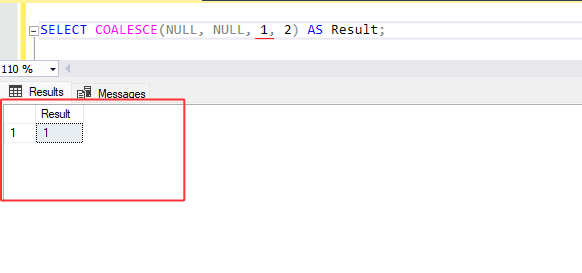Text copied!
COALESCE function
Hi! You should check
NULLIF function
post first.
In SQL, the COALESCE function is used to return the first non-null expression/value in a list of expressions/values.
The syntax of the COALESCE function generally looks like this :
COALESCE(expression1, expression2, expression3, ...)
• Define the 'expression1', 'expression2', 'expression3' and so on.
Here's an example of how you might use the COALESCE function :
1. Consider a sequence of values comprising NULL, NULL, 1, and 2.
2. Run below SQL statement :
SELECT COALESCE(NULL, NULL, 1, 2) AS Result;
3. In this example, the query successfully retrieves the first non-null value which is number '1' from the series of inputs given to COALESCE.

To enhance your understanding of 'SQL functions', be sure to check out our next tutorial.
Frequently Asked Questions :
Thank You! You should check
SQL Window functions
post next.